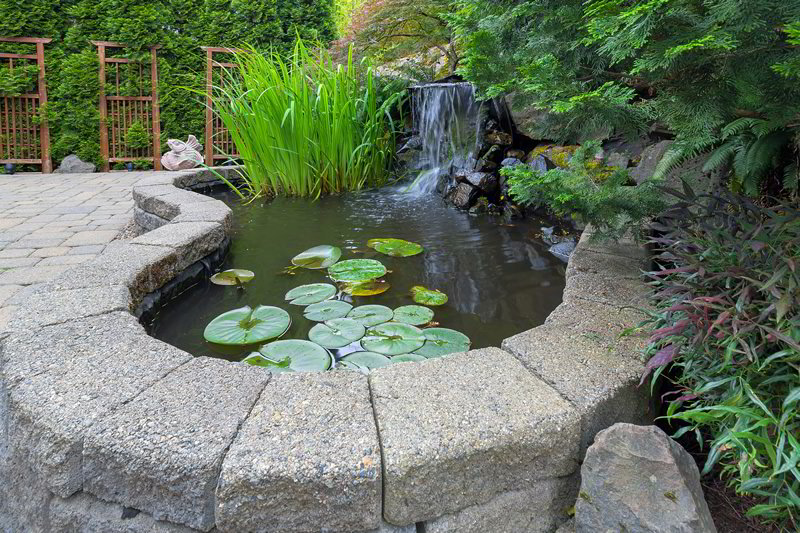Creating a Garden Water Feature

Many people enjoy the tranquillity of a water feature in their garden and there is no doubt that the sound of running water has an enchanting appeal. So read on if you are considering adding such a feature.
Water features come in various types and sizes to suit the requirements of the home owner, as well as the size and location of the garden. Things to consider when planning a water feature include:
- what type of feature - open pond, cascade, bog garden, shallow pool with pebbles and fountain etc.
- safety: avoid any depth of water where children are likely to be nearby
- the water feature may be at ground level, or sometimes raised and built within walls
- water features come in various sizes and shapes and can be as small as a small bubble pool and as large as a football pitch!
- Natural water features occur where the water table is near the surface and can appear as streams, springs and ponds and ultimately lochs and lakes
- In most gardens, the water feature will require sealing with either a membrane; solid pre-formed liner; water-proofed concrete, or in some cases waterproofed with clay
Once you have chosen what type of feature you would like, the following design considerations will help:
- ensure your chosen feature fits in with the existing garden layout
- finance and budget allowance should be an obvious factor as water features can be installed for as little as a few hundred pounds but can be much more depending on the type and size of feature
- it is important that the water feature looks as natural as possible and it is worthwhile looking at other gardens or the countryside for inspiration. In other words, just digging a hole and making a feature will probably not work!
- natural looking water features will tend to appear in low lying areas and look best when they are tastefully landscaped and link to nearby plantings
- once the water feature has been planned, it is vital that it is excavated to the correct depth; the sides of the feature are level
- if a rubber liner is used, there should be no sharp stones. A layer of sand and an underlay will help to protect the liner from leaks
- the water feature will possibly require a power supply for the pump and filtering mechanisms, although solar systems can sometimes have their place
- open pools without adequate filtration and planting tend to become affected by algae and again should be planned for
The following checklist may be helpful when thinking of installing a water feature:
- Budget
- Safety
- Type of water feature
- Size of feature
- Formal or informal (straight or curved edges)
- Lining method
- Location of feature
- Depth of feature
- Plantings in and around feature
- Pumps and filtration
We offer a design and advice service if you are considering a water feature - give Gordon a call on 07949 286 026 or email.



